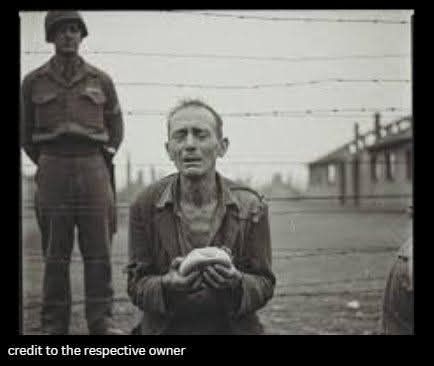On a quiet morning in May 1945, as American soldiers pushed open the gates of Mauthausen concentration camp, they were met not by cheers, but by a hush—broken only by the shuffling footsteps of men who had endured the unimaginable. The prisoners, gaunt and hollow-eyed, stepped haltingly into the light, as if unsure the world outside their prison still existed.
Among the supplies brought in by the liberators was a simple but miraculous gift: bread, fresh from the oven. One survivor, frail and bowed by hunger, cupped a piece in his trembling hands. He didn’t weep for the food itself, though he’d starved for years—he cried because the bread was warm. “I’d forgotten what warmth felt like,” he murmured, “not just in my hands, but in anything at all.”
That fleeting scene—a man cradling bread as if it were the most precious thing on earth—was caught in a photograph that traveled across the ocean. It became a quiet testament to both the depth of human suffering and the resilient spark of hope. For those who survived, that warm loaf wasn’t merely nourishment; it was the first fragile sign that the long darkness was lifting. Sometimes, courage and comfort come not in grand speeches or sweeping gestures, but in the gentle heat of a crust of bread, carried in hands that still remember how to hope.
